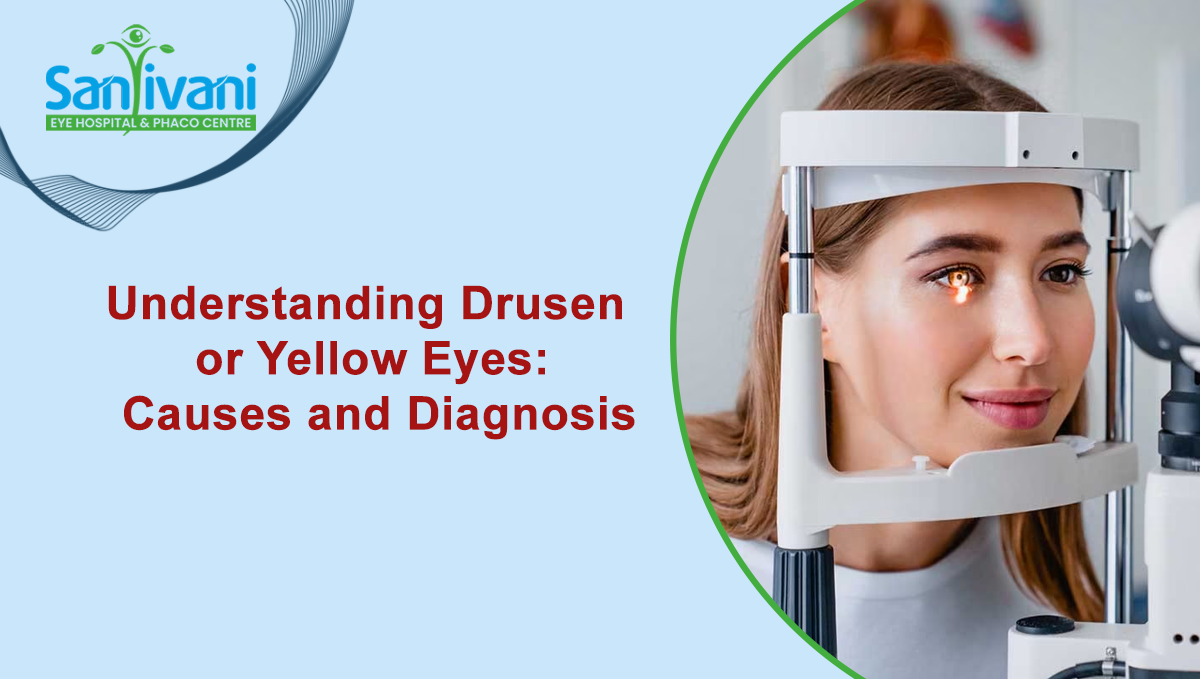
Understanding Drusen or Yellow Eyes: Causes and Diagnosis
Introduction
Drusen, often referred to as yellow eyes, are small yellow or white deposits that accumulate under the retina. While some types of drusen are normal and benign, others can indicate underlying eye conditions, including age-related macular degeneration (AMD). In this article, we'll delve into the causes of drusen, the different types, and how they are diagnosed.
Understanding Drusen :
- Normal Drusen :Small, round deposits of cellular waste material that accumulate in the retina over time. They are typically found in people over the age of 40 and are considered a normal part of aging.
- Abnormal Drusen :Larger, more numerous deposits that can be associated with eye conditions such as AMD. These abnormal drusen can interfere with vision and indicate a higher risk of developing AMD.
Causes of Drusen :
- Age : Normal drusen are commonly found in older individuals and are considered a natural consequence of aging.
- Genetics :Family history of AMD or other eye conditions can increase the likelihood of developing abnormal drusen.
- Smoking :Smoking is a significant risk factor for AMD and may contribute to the formation of abnormal drusen.
- High Blood Pressure :Hypertension can affect blood flow to the eyes, potentially leading to the development of drusen.
Types of Drusen :
Thyroid Eye Disease is an autoimmune condition, meaning the body's immune system mistakenly attacks its own tissues. In TED, the immune system targets the muscles and tissues around the eyes, leading to inflammation and swelling. The exact cause of this autoimmune response is not fully understood, but it is believed to involve a combination of genetic predisposition and environmental factors, such as smoking and stress. Additionally, levels of certain immune system proteins called cytokines may play a role in the development and progression of TED
Treatment :
- Hard Drusen :Small, discrete deposits that are typically considered normal and do not usually affect vision.
- Soft Drusen : Larger, more diffuse deposits that are associated with AMD and can lead to vision loss if left untreated.
- Symptoms of Drusen :This FDA-approved biologic medication targets the underlying cause of TED by blocking a specific pathway involved in inflammation and tissue remodeling. It has been shown to improve eye bulging and other symptoms in clinical trials.
- Yellow or White Spots : Drusen can appear as yellow or white spots on the retina, particularly in the macula, the central part of the retina responsible for sharp, central vision.
- Blurred Vision :In cases of advanced AMD, drusen can cause blurred or distorted vision, making it difficult to read, drive, or recognize faces.
Diagnosis of Drusen :
- Comprehensive Eye Exam :An eye doctor will perform a thorough examination of the retina using specialized instruments to look for signs of drusen.
- Optical Coherence Tomography (OCT) : This imaging test provides detailed cross-sectional images of the retina, allowing the doctor to visualize and measure the size and location of drusen.
- Fluorescein Angiography :A dye is injected into the bloodstream, and photographs are taken as the dye circulates through the blood vessels in the retina. This test helps identify abnormal blood vessel growth associated with AMD.
Treatment and Management of Drusen :
- Monitoring :For individuals with normal drusen, regular monitoring of vision and eye health is typically recommended to detect any changes over time.
- Lifestyle Modifications : Adopting a healthy lifestyle, including eating a balanced diet rich in antioxidants, quitting smoking, and managing blood pressure, can help reduce the risk of developing AMD and abnormal drusen.
- Anti-VEGF Therapy :For individuals with advanced AMD and soft drusen, intravitreal injections of anti-VEGF medications may be recommended to slow the progression of the disease and preserve vision.
Conclusion
Drusen, or yellow eyes, are common findings in aging eyes, but they can also signal underlying eye conditions such as AMD. Understanding the causes, types, symptoms, and diagnosis of drusen is crucial for early detection and appropriate management. By monitoring vision regularly, adopting a healthy lifestyle, and seeking timely medical attention, individuals can reduce their risk of vision loss associated with drusen and AMD.